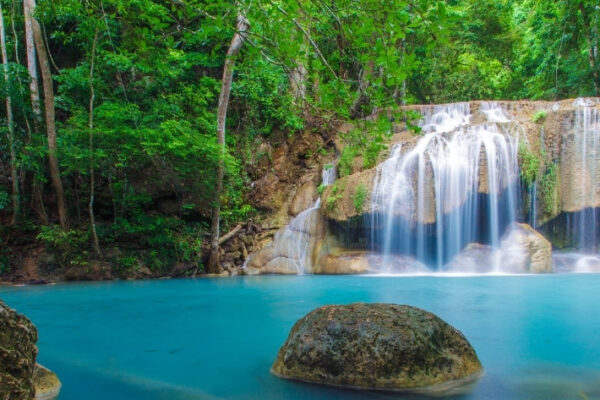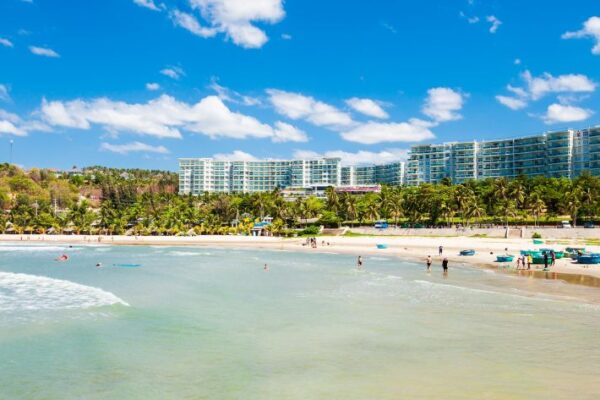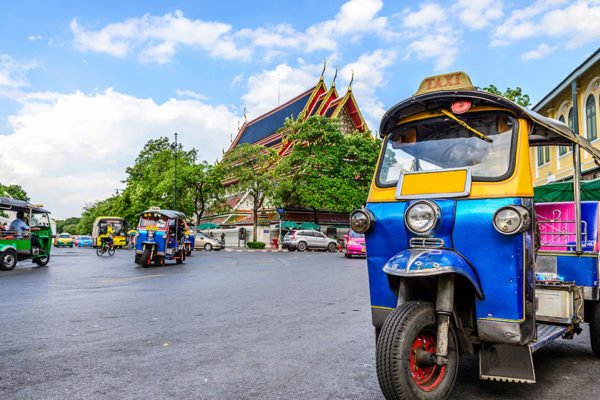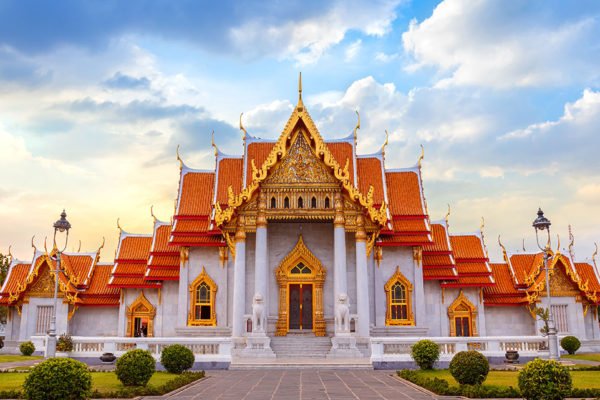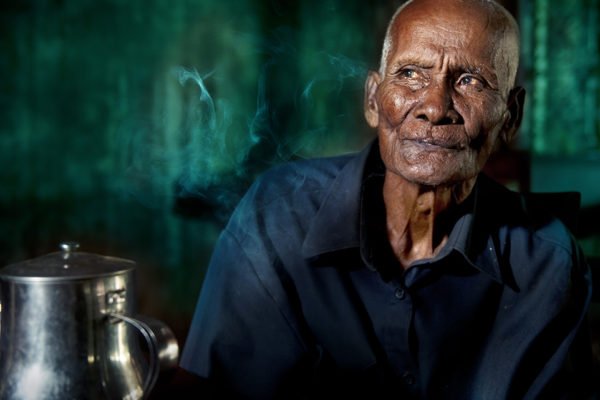Top 10 Cold Places in Southeast Asia You Can Visit without Leaving the Tropics
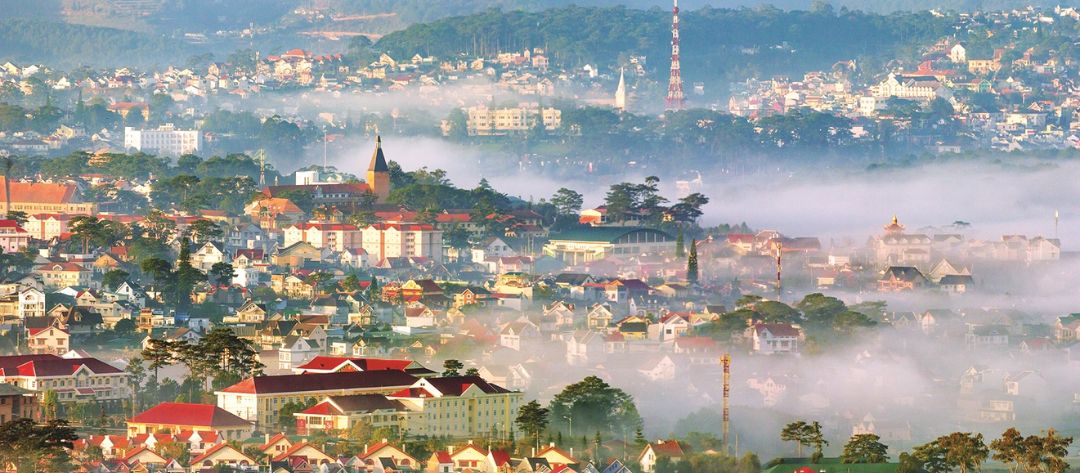
Usually, when people think of Southeast Asia, the first image is the blazing tropical sun, bustling cities, and humid beaches. But this vibrant region has more to offer than heat—hidden within its mountains and valleys are cool, misty escapes that might just surprise you.
Here, together with Asia Pioneer Travel, we’ll take a closer look at these cold places in Southeast Asia. Join us as we uncover the top cold places in Southeast Asia that are worth visiting, and see how you can enjoy a refreshing side of the tropics you never knew existed.
Vietnam: Chilly Escapes in the North & Central Highlands
Sapa – Mountain Peaks and Cool Climates Above the Clouds
Why Visit
Tucked away in the northern highlands of Vietnam, Sapa feels like a world apart. The mountains rise dramatically, their slopes dotted with villages where traditions have been kept alive for generations.
Walking here isn’t just about taking in the scenery—it’s about stepping into a living culture, where every market stall, every song, every embroidered thread tells a story. The cool air, the mist drifting through the valleys, and the warmth of local hospitality make this town a place that lingers in memory.
Temperature Range
Sapa is one of the few cold places in Southeast Asia where you’ll reach for a sweater instead of sunscreen. In winter, temperatures often fall between 8–15°C, bringing a crisp freshness to the air. Some mornings arrive wrapped in fog, while the rare snowfall adds a touch of magic, transforming the rice terraces and rooftops into an unexpected winter scene.
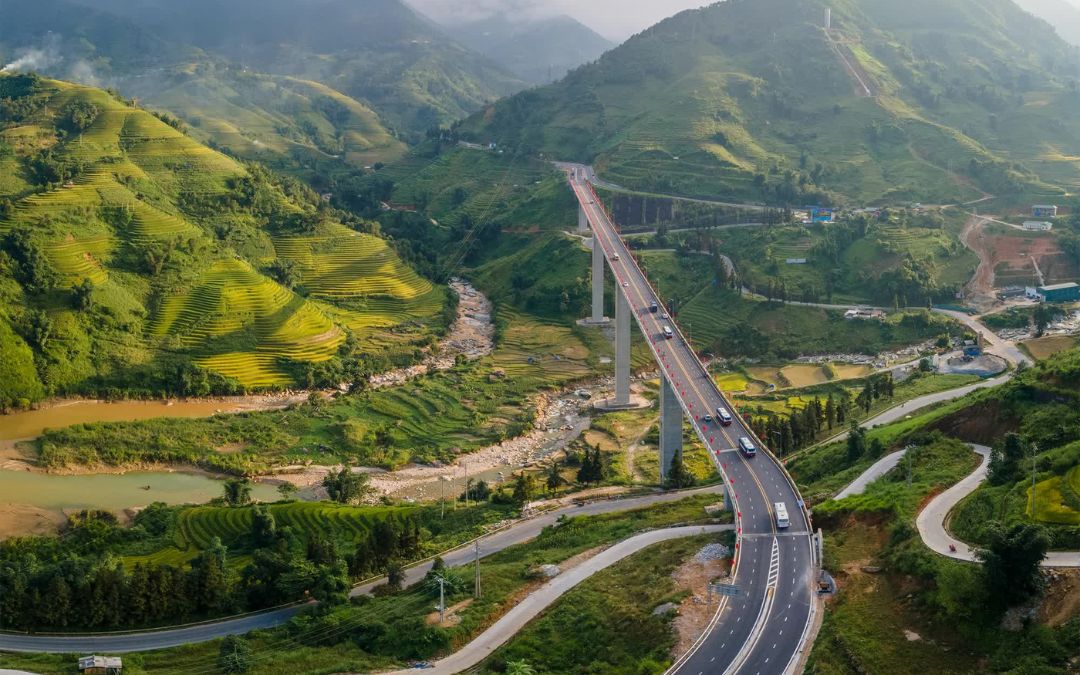
Sapa stands out as one of the most breathtaking cold places in Southeast Asia, where terraced rice fields cascade down mountainous valleys.
Special Attractions
- Terraced Rice Fields: Stretching across the mountainsides in graceful layers, the rice terraces change their colors with the seasons, from vibrant green shoots to golden waves ready for harvest.
- Fansipan Peak: Standing as the “Roof of Indochina”, this summit can be reached by cable car or trek, each offering its own way to savor sweeping panoramas above the drifting clouds.
- Hmong & Dao Markets: Alive with color and energy, these markets bring together handwoven fabrics, fragrant herbs, and the daily rhythms of highland communities.
Da Lat – The Romantic “City of Eternal Spring”
Why Visit
High in Vietnam’s Central Highlands, Da Lat is among the cold places in Southeast Asia that carries a charm that feels worlds away from the country’s tropical coasts. The city is wrapped in pine forests, dotted with lakes, and laced with traces of French influence that give it a soft, European touch. With its cooler air and slower pace, Da Lat has become a place where travelers come not just to see, but to pause—breathing in the freshness of a city that seems forever in spring.
Temperature Range
Like many cold places in Southeast Asia, the climate here is gentle and inviting, never too hot and rarely too cold. Temperatures usually stay between 14–23°C, bringing cool mornings, bright afternoons, and evenings that call for a light sweater. It’s the kind of weather that encourages long walks, quiet moments by the lake, and unhurried explorations through the hills.
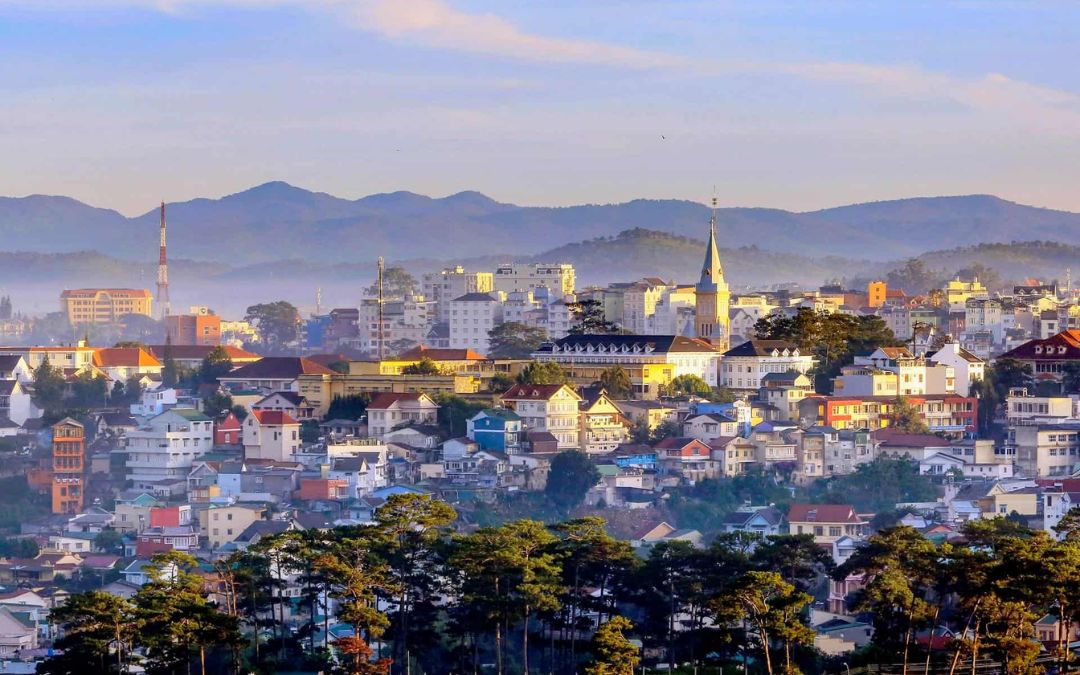
Da Lat offers a refreshing mountain retreat with its cool climate and French colonial atmosphere.
Special Attractions
- French Colonial Villas: Tucked into pine-clad hills, Da Lat’s French colonial villas whisper of another time. Their elegant facades and quiet gardens add a gentle, old-world grace to the city’s atmosphere.
- Flower Gardens: Step outside and the scenery bursts into color. Flower gardens bloom with the seasons, transforming streets and valleys into living tapestries that make even the simplest stroll feel extraordinary.
- Waterfalls: Just beyond the city, the sound of water calls. Whether it’s the soft cascades of Datanla or the powerful rush of Pongour, Da Lat’s waterfalls offer peaceful escapes wrapped in nature’s rhythm.
- Coffee farms: Across the highlands, plantations stretch toward the horizon, inviting travelers to pause over a steaming cup while mist drifts lazily through the valleys below.
>> Read More: Top 17 Beautiful Places to Visit in Da Lat for a Dreamy Mountain Escape
Ha Giang – Crisp Air and Breathtaking Karst Landscapes
Why Visit
Ha Giang is a place of beautiful contradictions. Jagged mountains rise against the sky, yet valleys below remain calm and untouched. Tradition lingers in every village, even as daily life moves quietly forward.
Come winter, the landscapes take on a different kind of magic. Peaks wear a dusting of snow, and winding trails feel hushed, as if holding their breath. It’s a season that invites both stillness and discovery—a chance to see this northern frontier at its most poetic.
Temperature Range
Winter in Ha Giang carries a quiet charm. Days linger at a gentle 10°C to 18°C, cool enough to refresh yet comfortable for long hours of wandering. When night settles in, the air sharpens—dropping to about 5°C in the highlands—making every extra layer and steaming cup of tea feel like a small comfort.
The skies stay clear, the air crisp and dry. It’s the perfect backdrop for tracing winding mountain roads, pausing at viewpoints, and soaking in the rugged northern landscapes at their most striking.
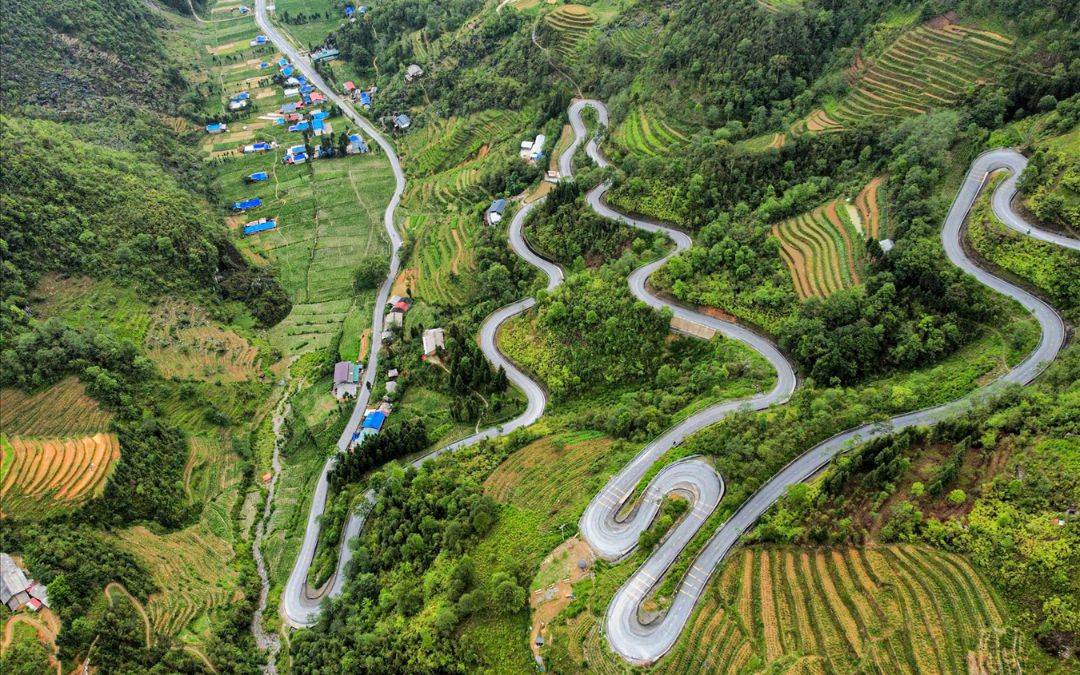
Ha Giang province, where winding mountain roads reveal stunning highland landscapes.
Special Attractions
- Ma Pi Leng Pass: Often called the “King of Mountain Passes”, this 20-kilometer stretch winds through towering limestone cliffs and deep valleys, offering breathtaking views that seem to stretch into eternity.
- Dong Van Karst Plateau: A UNESCO Global Geopark, this vast expanse of limestone formations and deep valleys tells a story of over 500 million years of geological history.
- Lung Cu Flag Tower: Standing at the northernmost point of Vietnam, this tower offers panoramic views of the surrounding mountains and valleys, symbolizing the nation’s sovereignty.
- Meo Vac Market: A vibrant Sunday market where ethnic minorities gather to trade goods, offering a glimpse into the local culture and traditions.
- Dong Van Old Quarter: A historical area with well-preserved architecture, reflecting the region’s rich cultural heritage.
- Quan Ba Heaven Gate: A scenic viewpoint offering stunning vistas of the surrounding landscape, often enveloped in mist during the winter months.
>> Read More: A Full Guide to Conquer The Ha Giang Loop
Bach Ma National Park – Misty Trails in Central Vietnam’s Highlands
Why Visit
Bach Ma National Park is where natural beauty and history intertwine, making it one of the remarkable cold places in Southeast Asia. High in the cool mountains, it offers a welcome escape from the tropical heat of the lowlands. Trails lead through dense forests, past cascading waterfalls, and toward still, reflective lakes.
Scattered among the greenery are the quiet remnants of French colonial villas—silent witnesses to another era, adding depth to every step you take. Whether you’re hiking, meditating by the water, or simply breathing in the crisp air, Bach Ma unfolds as a place that soothes both body and mind.
Temperature Range
Just a short drive from Hue, Bach Ma National Park offers a refreshing retreat into Vietnam’s highlands, joining the list of cold places in Southeast Asia. Perched at elevations reaching 1,400 meters, the park enjoys a temperate climate, with daytime temperatures typically ranging from 12°C to 20°C. Evenings can be cooler, inviting travelers to don a light jacket and embrace the crisp mountain air.
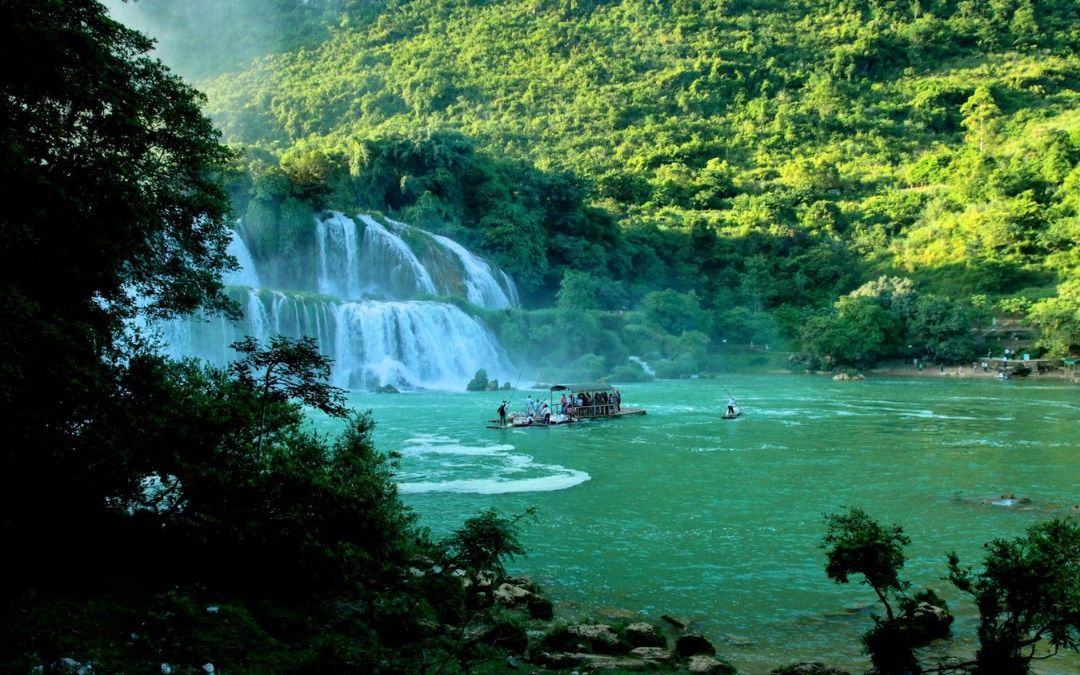
Bach Ma National Park represents pristine waterfalls flowing through misty mountain forests.
Special Attractions
- Vong Hai Dai (Sea Observatory): At 1,450 meters above sea level, this vantage point offers sweeping views of the Annamite Range, Cau Hai Lagoon, and the shimmering coastline. It’s especially captivating at sunrise and sunset when the landscape is bathed in golden hues.
- Do Quyen Waterfall: This majestic 300-meter waterfall is named after the rhododendron trees that bloom along its cliffs each spring. The trail to its base involves a steep 600-step staircase, rewarding hikers with a dramatic view of the cascading waters.
- The Five Lakes Trail: A serene hike connecting five crystal-clear lakes, each surrounded by lush forest. The tranquil waters and vibrant greenery create a peaceful atmosphere, perfect for reflection and relaxation.
- Truoi Lake & Truc Lam Zen Monastery: Located at the foot of Bach Ma Mountain, Truoi Lake offers a serene setting for boating. A short boat ride leads to the Truc Lam Zen Monastery, where visitors can meditate or simply enjoy the calm Buddhist atmosphere.
- French Colonial Villas: Scattered throughout the park are remnants of French-era villas, once part of a hill station retreat established in 1932. These abandoned structures, now in ruins, offer a glimpse into the past and a unique contrast to the surrounding natural beauty.
>> Read More: Top 13 Vietnam National Parks to Visit for Nature Lovers
Thailand: Northern Highlands with a Chill
Chiang Rai & Doi Tung – Cool Weather and Golden Triangle Charms
Why Visit
In the quiet north of Thailand, Chiang Rai and Doi Tung represent cold places in Southeast Asia that feel worlds apart from bustling cities. Life moves at a gentler pace here, with landscapes that invite unhurried exploration and traditions that remain deeply rooted. Stroll through villa grounds, wander hillside gardens, or step into hill tribe villages, and you’ll find a region where nature and culture flow seamlessly together.
Temperature Range
The highlands greet visitors with a refreshing, typical coolness of cold places in Southeast Asia, especially during the dry season. Days linger between 10°C and 18°C, ideal for walking trails or cycling through tea-scented hillsides. As evening falls, the air sharpens, carrying a crispness that calls for warm layers and slower moments. Under clear skies, distant ridges and rolling plantations stretch endlessly, a reminder of the quiet beauty found only in the north.
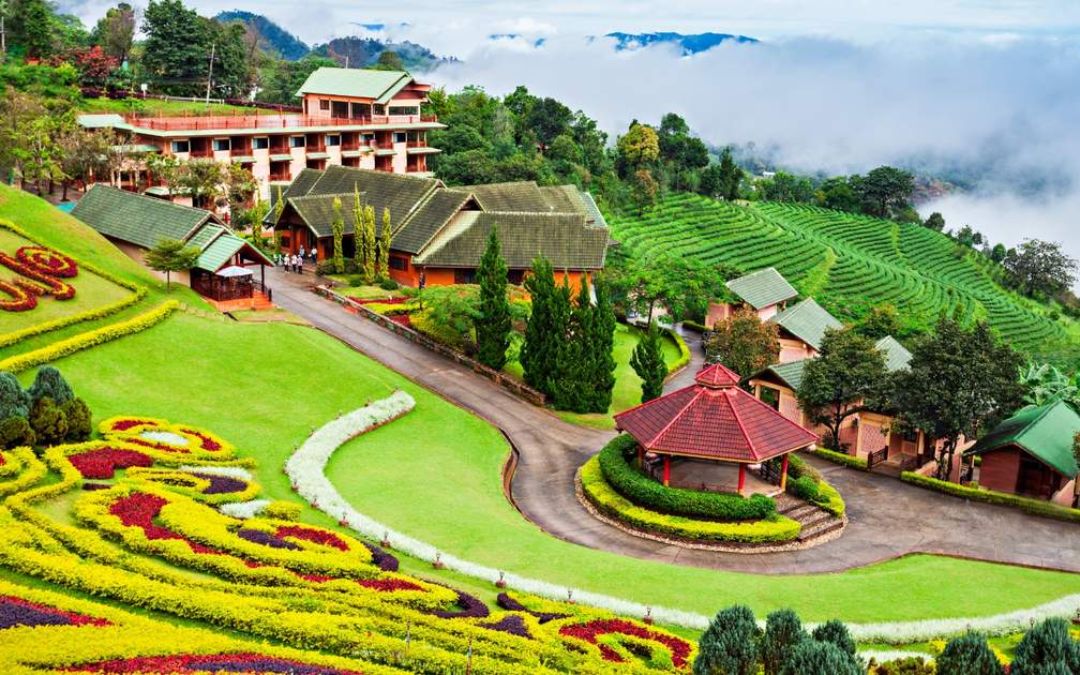
Chiang Rai & Doi Tung region exemplifies the elevated gardens and misty mountain climate.
Special Attractions
- Doi Tung Royal Villa: Perched on a forested hillside at 1,400 meters, this residence of the late Princess Mother blends Swiss alpine influences with traditional Lanna architecture. Its thoughtfully designed gardens and interiors reflect her dedication to improving local communities while preserving the region’s heritage.
- Mae Fah Luang Garden: Adjacent to the villa, these gardens bloom with vibrant flowers and native plants, creating a peaceful environment for wandering. Sculptures like “Continuity” hint at the passing of traditions and cultural connection across generations.
- Hill Tribe Villages: The surrounding highlands are home to Akha, Lahu, and Karen communities. Visiting these villages provides insight into centuries-old customs, intricate handicrafts, and daily life that thrives in harmony with nature. Interactions with local artisans offer a glimpse into traditions that remain strong in this serene corner of Thailand.
- Tea Plantations: The slopes around Doi Tung ripple with rows of green tea bushes, creating landscapes as soothing as they are scenic. Walking or cycling through the plantations reveals age-old harvesting techniques, while the cool highland air lingers with the scent of fresh leaves.
>> Read More: Places To Add In Your Thailand Itinerary 14 Days – Top Cities and Islands Explained
Doi Inthanon – Thailand’s Highest Peak and Refreshing Breezes
Why Visit
Doi Inthanon in Chiang Mai invites travelers to step into a world of misty forests, cascading waterfalls, and panoramic highland views. Its cooler climate and cloud-kissed mornings create a dreamlike backdrop for hiking, photography, or simply pausing to breathe in the mountain air. From serene trails to dramatic summits, the park offers a harmonious blend of adventure and tranquility, a place where nature’s grandeur unfolds quietly yet powerfully.
Temperature Range
As Thailand’s highest peak, rising 2,565 meters above sea level, Doi Inthanon offers a refreshing contrast to the heat of the lowlands. In the dry season, the summit can dip to 5°C, while lower areas stay around 15°C. Mornings often arrive wrapped in mist, giving the mountains a dreamlike veil, while evenings turn crisp and quiet—perfect for layering up and slowing down. The cool season is an ideal time to explore the park’s trails without the pressure of tropical heat.
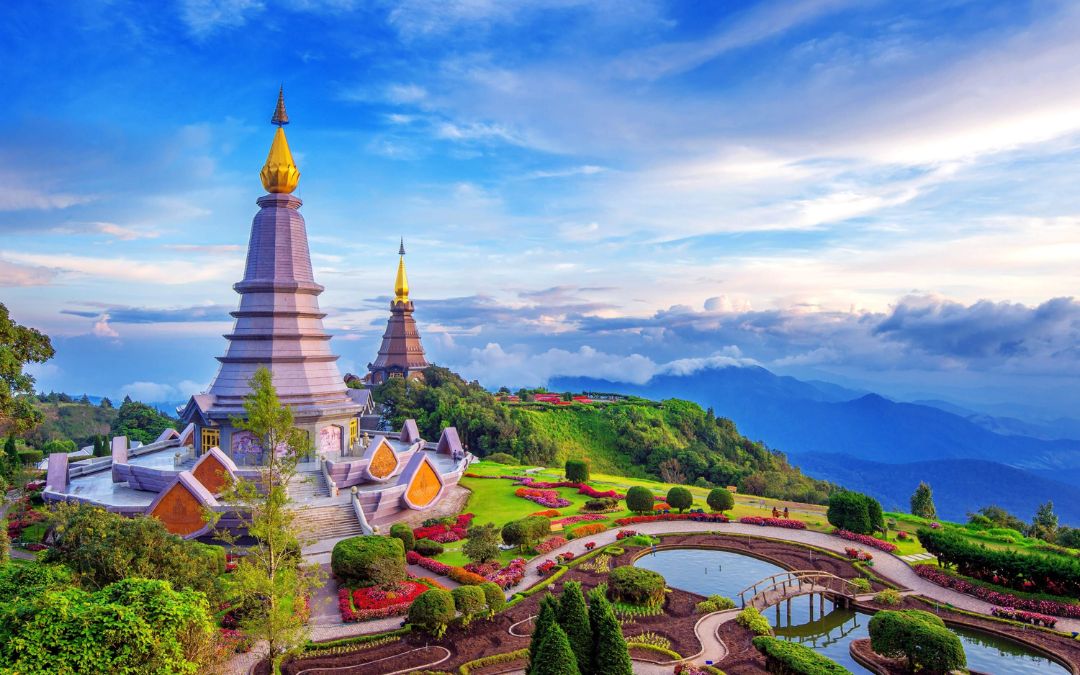
Doi Inthanon, Thailand’s highest peak, is a favorite for travelers seeking cooler mountain temperatures.
Special Attractions
- Doi Inthanon Summit: Standing at 2,565 meters, the peak is crowned by a stupa honoring King Inthawichayanon. The panoramic views from here stretch across mist-shrouded mountains and valleys, a breathtaking scene especially in the early morning light.
- Kew Mae Pan Nature Trail: This 3.2-kilometer trail is a favorite for its dramatic sunrise views, when valleys transform into a sea of clouds. The path leads through lush forest and open meadows, with guided walks available to share stories of the park’s diverse wildlife and plants.
- Ang Ka Luang Nature Trail: A gentle boardwalk through cloud forest, where every tree seems cloaked in moss and mist lingers in the air. The atmosphere is hushed, almost otherworldly, making it one of the most enchanting corners of the park.
- Pha Dok Siew Nature Trail: A longer journey that threads together waterfalls, dense jungle, and hill tribe villages. Along the way, hikers encounter both natural wonders and glimpses of traditional life that add cultural depth to the trek.
- Waterfalls: Doi Inthanon is alive with water. Wachirathan thunders with raw power, Mae Klang flows gently into clear pools, and Mae Ya tumbles gracefully through forest—a trio of falls that each tell a different story of the mountain’s spirit.
Mae Hong Son – Misty Valleys and Peaceful Mountain Life
Why Visit
Mae Hong Son is where Thailand slows down. Tucked among misty valleys and forested hills, it offers a quieter rhythm of life—one shaped by ancient temples, tranquil villages, and landscapes that feel untouched by time. Every winding road leads to a new perspective, whether it’s a hidden monastery, a peaceful hamlet, or simply a stretch of mountains that seems to go on forever. It’s a place to breathe deeply, wander gently, and connect with a more timeless side of the north.
Temperature Range
The cool season brings relief from the heat of the lowlands, establishing Mae Hong Son among Thailand’s cold places in Southeast Asia. In winter, days rest between 8°C and 17°C—ideal for unhurried walks through valleys, tea plantations, or mountain trails. Mornings often arrive veiled in mist, softening the edges of the hills and lending the landscape a dreamlike calm. It’s the weather that invites layering up, taking it slow, and savoring each view.
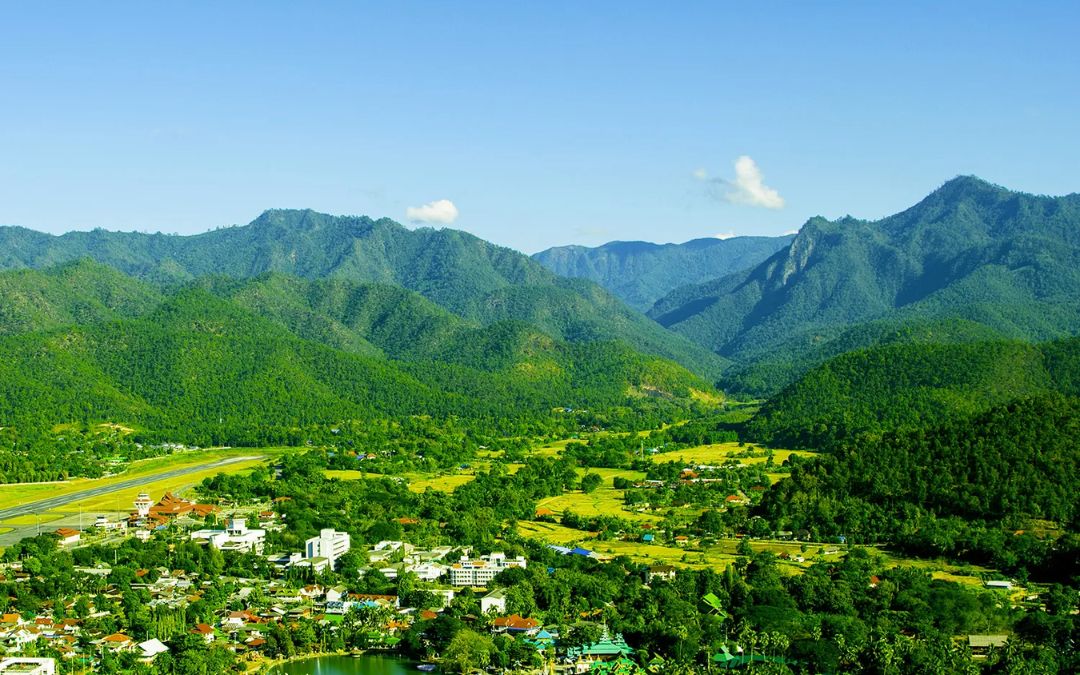
The mountainous province of Mae Hong Son offers travelers a refreshing escape from tropical heat.
Special Attractions
- Wat Phra That Doi Kong Mu: Rising above the town on a hilltop, this temple is as much about the journey as the destination. Its gleaming white chedis and Burmese-inspired architecture stand in quiet contrast to the sweeping views of Mae Hong Son’s valleys below.
- Pai Canyon: Narrow ridges and dramatic ravines create a striking landscape. Sunset casts a warm glow across the canyon, making it a favorite spot for photographers and contemplative walks.
- Ban Rak Thai: This lakeside village near the Burmese border is famous for its tea plantations and serene scenery. Its Chinese-influenced architecture and local delicacies invite visitors to slow down and savor the atmosphere.
- Pang Ung: Surrounded by pine forests, this alpine-style lake offers calm waters perfect for boating or camping. Often called the “Switzerland of Thailand”, it is a serene spot to breathe in the crisp mountain air.
- Tham Pla Fish Cave: Shaded and cool, this cave shelters thousands of sacred fish. It’s a quiet stop along the highland road, offering a pause for reflection amid the steady flow of travel.
>> Read More: What to Do in Thailand for 2 Weeks – A Guide for Every Type of Traveler
Laos: Hidden Cool-Climate Retreats
Phongsaly – Remote Mountains and Refreshing Air
Why Visit
Remote and little touched by mass tourism, Phongsaly offers a slower rhythm of life and landscapes that seem wrapped in mist and tradition. Cool air drifts through the mountains, villages keep their age-old customs alive, and the hillsides are home to tea trees older than memory. Trekking, meeting local communities, or simply sitting with a cup of freshly brewed tea—here, every moment invites quiet discovery and genuine connection.
Temperature Range
Perched at 1,400 meters above sea level, Phongsaly enjoys a temperate climate that stands in contrast to much of Southeast Asia’s tropical warmth. Year-round temperatures typically range from 10°C to 18°C, with cooler nights, especially during the dry season.
In winter, the mercury can dip to around 3°C, offering a refreshing chill that invites cozy layers and early morning mist. This cool climate makes it an ideal destination for trekking and cultural exploration without the sweltering heat found in other regions.
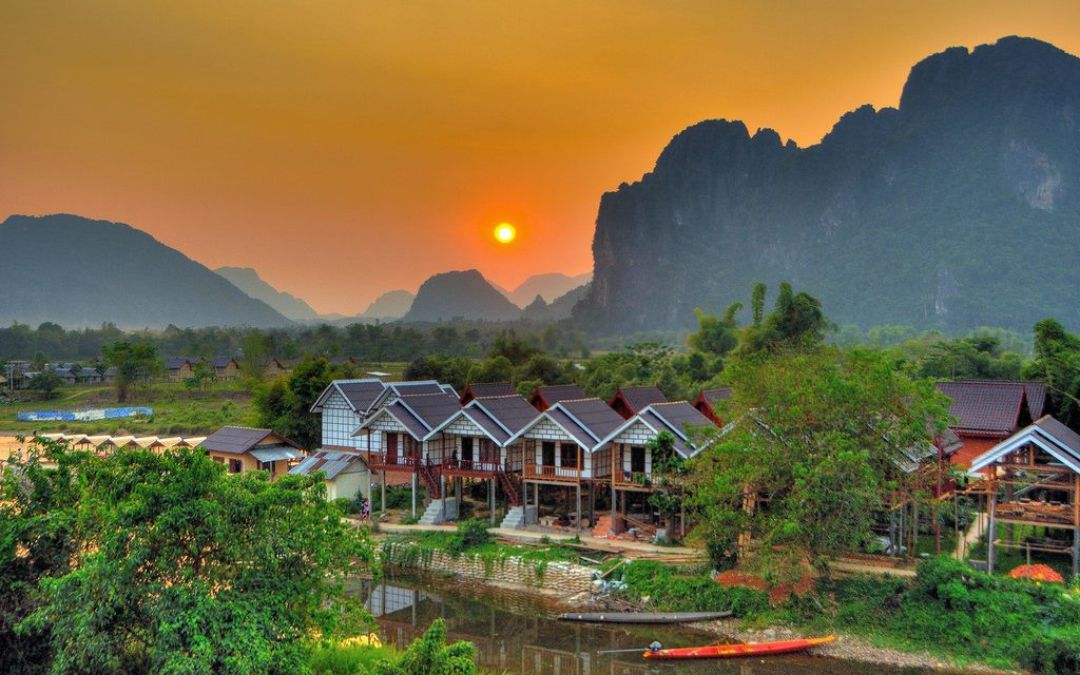
Phongsaly province in northern Laos counts among the lesser-known cold places in Southeast Asia
Special Attractions
- Ancient Tea Plantations: Just outside Phongsaly Town, centuries-old tea plantations stretch across the hills. Towering trees produce aromatic leaves, and traditional harvesting techniques still shape the local craft. Sampling the tea here provides a direct connection to the land and its enduring traditions.
- Akha & Phu Noi Ethnic Villages: The surrounding mountains are dotted with villages of the Akha and Phu Noi peoples. These communities maintain rich traditions, from intricate silver jewelry crafting to unique agricultural practices. Trekking through these villages offers a glimpse into lifestyles that have remained largely unchanged for centuries.
- Phu Fa Mountain: A hike up Phu Fa Mountain rewards adventurers with panoramic views of Phongsaly Town and the encircling valleys. The summit, often shrouded in mist, provides a serene setting for reflection and photography.
- Phongsaly Town: The town itself is a blend of natural beauty and cultural richness. Stroll through local markets, sample traditional foods, and visit the Museum of Phongsaly Ethnic Groups to learn about the diverse communities that call this region home.
>> Read More: Best Time To Visit Laos
Xieng Khouang – Cool Highlands and the Mysterious Plain of Jars
Why Visit
Xieng Khouang is a land where mystery, memory, and mountain beauty meet. Scattered across its windswept plateau are ancient stone jars whose origins remain a puzzle—silent sentinels inviting wonder and imagination.
Alongside this archaeological intrigue lies a deeper story: a landscape still marked by the scars of war, where learning about the past is as much a part of the journey as admiring the present. With its cool climate and rolling hills, Xieng Khouang offers travelers a rare balance of reflection, discovery, and natural calm.
Temperature Range
High in the uplands of northern Laos, the air is fresh and gentle. Days often sit between 10°C and 20°C, just right for exploring trails and open landscapes. Nights cool quickly, especially from November to April, so a jacket becomes a welcome companion. It’s the kind of weather that encourages long walks, slow conversations, and an unhurried pace.
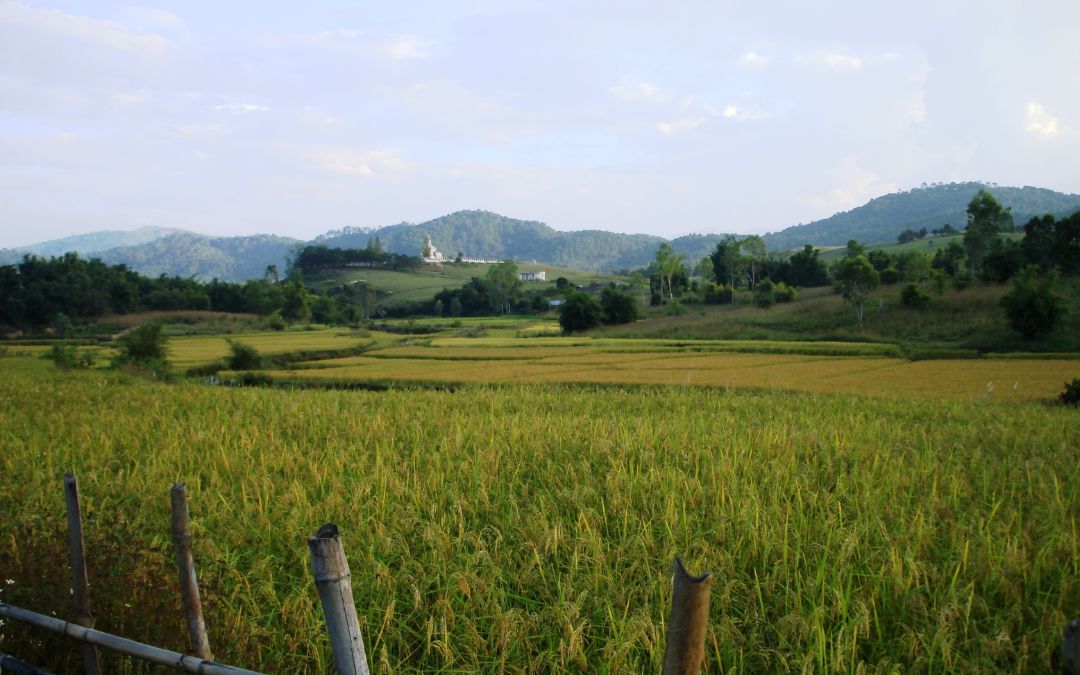
Xieng Khouang’s elevated plateau makes it one of Laos’ notable cold places in Southeast Asia
Special Attractions
- Plain of Jars: A UNESCO World Heritage Site, this archaeological wonder spreads across more than 90 locations on the Xiangkhoang Plateau. The jars—some weighing up to ten tons—have stood for centuries, their purpose still shrouded in mystery. Standing among them, it’s hard not to feel a quiet awe.
- War History Sites: Xieng Khouang was deeply affected by the Secret War, and reminders of that time remain part of the landscape. At the MAG UXO Visitor Centre in Phonsavan, you’ll find stories of resilience alongside sobering lessons about unexploded ordnance and the ongoing efforts to heal the land.
- Cool Mountain Climate: Beyond its history, the province itself is a reward. The high elevation keeps the air crisp and pleasant, making every trek, market stroll, or countryside wander all the more enjoyable.
>> Read More: Where To Visit In Laos For First-time Travelers?
Cambodia: Highland Chill Beyond the Tropics
Mondulkiri Province – Rolling Hills, Forests, and Crisp Mornings
Why Visit
Instead of bustling cities or lowland plains, you will find rolling green hills, whispering pine forests, and cool mountain air in Mondulkiri. Life moves slowly here, offering travelers a chance to step back and experience both nature’s rhythms and the traditions of the Bunong people who call this land home.
Whether you’re wandering through dense forests, pausing at a waterfall, or learning from local communities, Mondulkiri is less about rushing and more about connecting with the land, its stories, and its people.
Temperature Range
Nestled in the northeastern highlands, Mondulkiri joins other cold places in Southeast Asia, offering cool respite from Cambodia’s tropical heat. Temperatures typically range from 12°C to 20°C, with cooler nights, especially during the dry season from November to February. This temperate climate makes it an ideal destination for those seeking to explore lush landscapes and indigenous cultures without the sweltering heat found in other regions.
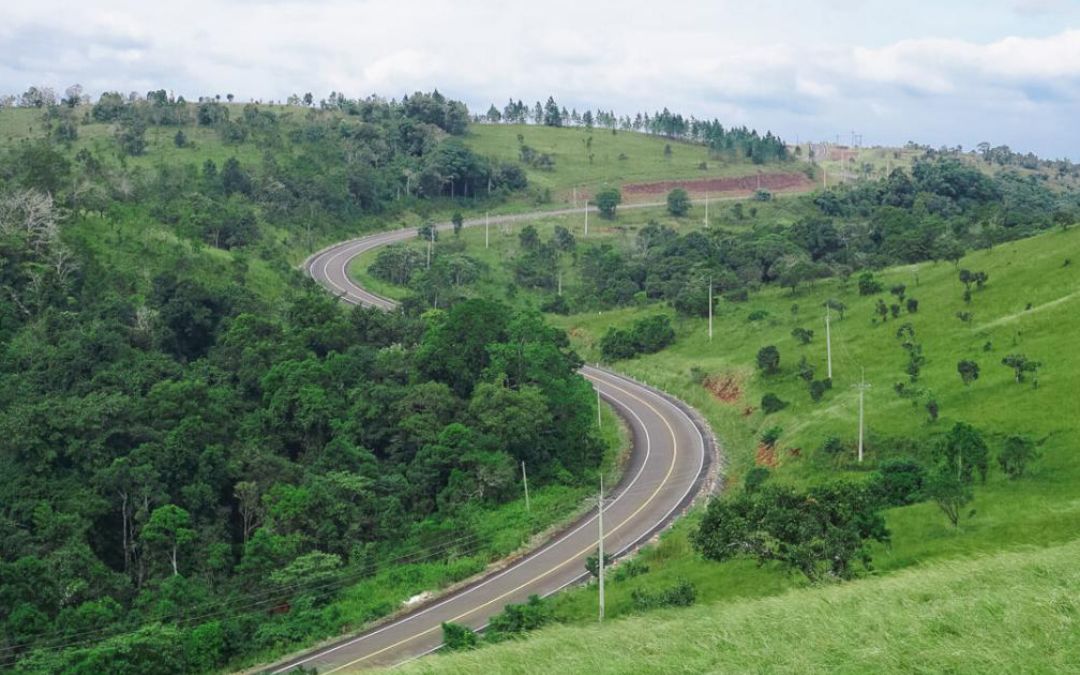
Mondulkiri Province’s high-altitude plateau, where rolling hills provide relief from the country’s typical heat.
Special Attractions
- Bou Sra Waterfall
About 43 kilometers from Sen Monorom, Bou Sra is one of Cambodia’s most iconic natural landmarks. Its three-tiered cascade tumbles dramatically into the forest below, filling the air with cool mist. Viewing platforms provide sweeping perspectives, making it a favorite for both quiet reflection and photography.
- Elephant Sanctuaries
Mondulkiri is also known as a sanctuary for giants. At places like the Mondulkiri Project or Elephant Valley Project, rescued elephants roam freely in their natural jungle habitat. These areas are less frequented by tourists, providing a tranquil setting for nature enthusiasts.
- Pine Forests and Rolling Hills
Much of the province is defined by wide, open landscapes and fragrant pine forests. Trails wind through these quiet spaces, inviting hikers, birdwatchers, and anyone seeking stillness to pause and take in the beauty of Cambodia’s lesser-known highlands.
Travel Tips for Visiting Cold Places in Southeast Asia
The Right Season
The period between November and February is when the cold places in Southeast Asia are at their most refreshing. During these months, daytime temperatures stay comfortably cool, while evenings can turn crisp, especially in elevated areas like northern Vietnam or Laos. Planning a journey in this window means clearer skies, minimal rainfall, and landscapes that feel both calm and invigorating.
What to Pack
Packing smart makes all the difference in cooler climates. Lightweight layers are essential since mornings and evenings can be chilly, but afternoons may still warm up. A waterproof jacket or poncho is worth carrying, as sudden showers are common even in the dry season. Sturdy walking shoes are also important, given that many rural paths and village trails can be uneven or damp.
Getting Around
Reaching remote mountain regions often requires combining different modes of transport. Long-distance buses connect major cities to provincial hubs, while trains in countries like Vietnam and Thailand provide scenic alternatives for slower travel.
For those short on time, domestic flights cut the journey significantly, though they usually mean arranging local transport—such as minivans or motorbikes—for the final stretch to highland towns.
Local Culture
Many cold-weather destinations in the region are home to ethnic minority communities. Visitors are welcomed warmly when they show sensitivity to traditions. Dressing modestly is appreciated, especially in villages where daily life still follows ancestral customs.
Asking before taking photographs, greeting elders respectfully, and supporting local markets or homestays are simple ways to engage with authenticity while leaving a positive impression.
Final Words
Cold places in Southeast Asia may be few and sometimes less known, but that doesn’t make them any less magical. The cool air brings a different rhythm to life, and the landscapes reveal a beauty shaped by mist, pine forests, and mountain skies. It’s a side of the tropics you don’t expect, yet one that leaves lasting impressions.
Of course, preparing well makes the journey even more rewarding. In return, you’ll discover moments of quiet wonder, where nature’s chill creates memories far warmer than the temperature.
If you’re curious to explore these hidden cool escapes, do not hesitate to contact Asia Pioneer Travel, as we are always here to help you shape such an unforgettable and customized trip!
